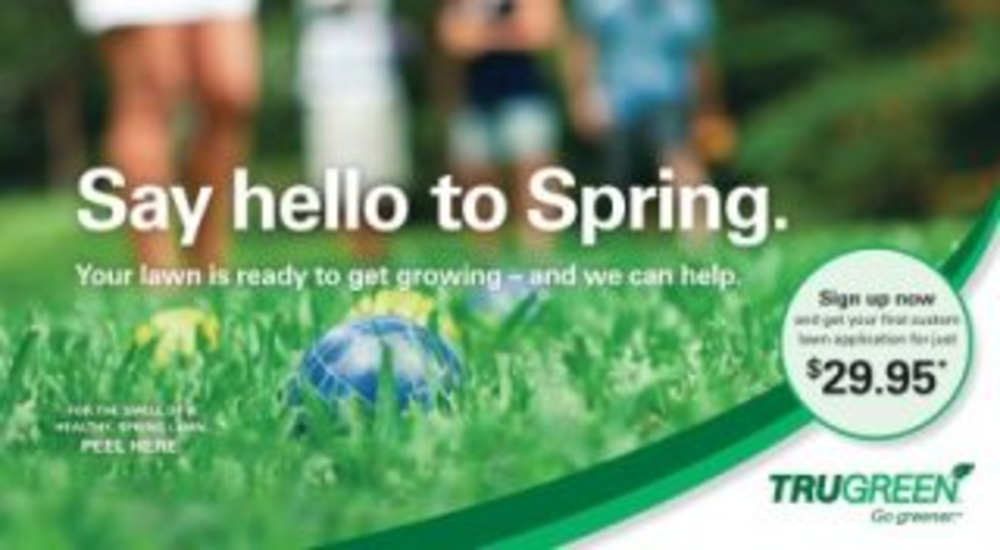The digitalization of marketing won’t trigger the end of direct mail. For most marketers, a campaign’s effectiveness is contingent upon marrying traditional direct ?marketing tactics with digital technology. That is particularly true for new customer acquisition tactics.?
Lawn-care company TruGreen launched an integrated marketing campaign in February, using direct mail, telephone, sweepstakes, a revamped website, pop-up stores in malls and TV. The company worked with AOR Publicis Dallas to refresh its reputation and improve service package sales. ?
“We’re trying to update the brand,” says Philip Dobbs, CMO at ?TruGreen. “We want to make it more contemporary and relevant in order to build the brand in time to sell our ?service packages for the season.” ?
The revamped website is “simpler to navigate” with “simpler presentation,” Dobbs says. The subsidiary of ServiceMaster generates a large portion of sales from consumers who fill out lead forms and do research online.?
“Telephone is still our most effective way to sell, but we want to be able to allow customers to buy digitally as well,” Dobbs says. “Direct mail is still a great way to reach our targets. It provides a visually compelling [interaction]. We get good responses from these efforts. It’s like [our version of] the Twain quote. “The rumor of direct mail’s death has been exaggerated.” ?
“Effective direct marketers understand, support and leverage an integrated approach for customer acquisition,” says Chris Nolan, cofounder and president of direct marketing agency Mercury121. “Direct mail will always be a leading channel for customer acquisition. With marketers now able to layer on the interactive elements which drive prospects to the Web and personalized content, they’re bound to see a boost in response and the conversion of their top prospects.”?
TruGreen and Greensboro, N.C.-based marketing agency Bluezoom designed the direct mail pieces to shift the conversation from “weed kill” to “yard enjoyment,” says Dobbs. Consumers in its database received scratch-and-sniff postcards, and ?previous customers received either gatefolds or three-piece self-mailers to customers. Additionally, a sweepstakes encouraged consumers to register on the website to win prizes. ?
To round out its strategy, TruGreen pop-up stores in malls are open during the 10-to-12-week period when the company sells the bulk of its service packages, and the company collects e-mail and phone numbers onsite to follow up with these prospects.?
“TruGreen has multiple touch points,” says Shon Rathbone, executive creative director at Publicis Dallas. “Phone, specialists in the field, as well as the Internet and direct [mail] — that’s how the company stays close to the TruGreen customer.”?
TruGreen is running two 30-second DRTV commercials on national network news and premium cable TV. The spots include a phone and Web address to drive customers to ?those channels.?
Direct mail isn’t the only traditional channel marketers are integrating with digital. Farmland Dairies, for ?example, launched a campaign in March that married traditional billboard tactics with mobile technology to target prospects. The company used static panels in more than 100 health clubs in New York that featured $1-off coupons, along with QR codes that tell consumers how to receive free samples of products. Farmland collected e-mail addresses through the QR codes that it “may use for future communication,” says Stephen Raiola, marketing and merchandising manager at Farmland. ?
“I don’t think we’ll see the end of direct mail, but I’m certain we’ll see reduced mailing volumes as marketers and agencies leverage improved modeling and targeting, and migrate to POD to hyper-personalize their message and engage prospects in the most relevant way” says Nolan.








